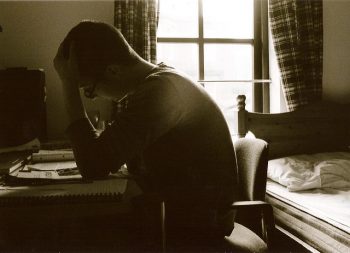Peculiarities of Driving in the Netherlands Posted by Karoly Molina on Apr 11, 2018 in Culture
Driving in the Netherlands is certainly an experience. Having driven both in Mexico and the U.S., I never found the signs to be too different. In the Netherlands, I had a completely different experience. Here are 4 driving experiences that have caught my attention.
Kijkersfile
You are on the snelweg driving at 130 kph (about 80 mph) when all of a sudden the cars in front of you begin to slow down. You step on the rem and hope the car behind you notices in time. Traffic is moving at about 40 kph and you are certain there has been an accident in front of you. You keep on driving. Nothing. After some meters, you see an accident in the opposite lane of the snelweg. Did the cars jump to your side of the highway?
Of course not! The cars in front of you are slowing down just to see the accident causing a kijkersfile or seeing traffic. You can observe this happening on all the nearby roads regardless of whether the accident is directly interfering with traffic.
According to this article, kijkersfiles take up about 15 minutes of our time each year. The article goes on to say
Het kwartier dat we per jaar kwijt zijn aan kijkersfiles is ongeveer een half procent van het totaal aan 50 uur dat we jaarlijks in de file staan. Dan valt een kwartiertje nog wel mee, erkent Frank Boer van de VID. ‘Maar ja, het is natuurlijk wel een file waarvan je denkt: oh, deze is echt niet nodig!’
The situation is sometimes so critical that police have issued fines to people filming the accidents. During an accident in Brabant last year, 28 people were op de bon geslingerd.
Singing Roads
This week in Friesland, drivers were surprised with a musical road. The Fries volkslied is playing at a section of the N357 close to Jelsum as part of the campaign to make Leeuwarden the cultural capital 2018. The music is also aimed at encouraging drivers to slow down a bit to hear the music. Despite the big hopes (and investment) for this project, those living near the zingende autoweg have complained that the noise is driving them crazy. The song plays each time a driver passes by regardless of the time. Was it really worth the €80,000 price tag?
The bike is king
It is no surprise to anyone who has set foot in the Netherlands that the bike has a special place in everyone’s hearts and homes. The roads are no exception. The Netherlands has some of the best infrastructure for cycling and plenty of education for children to ensure that everyone cycles safely.
That being said, the importance and power of the bikes in cities still dumbfounds me! Amsterdam is the greatest example of this: the bike has priority over anyone else. While I know there are still plenty of accidents were cyclists are badly hurt, the overall experience is that we let the bikes go first. Even when Nazi Germany invaded the Netherlands, the Dutch were known to use their bikes as a sort of rebellion against the invaders. You can read more about it in the book City of Bikes: The Story of the Amsterdam Cyclist by Pete Jordan.
However, not all is perfect! In the following video, you can see 5 challenges of cyclists in Amsterdam.
https://youtu.be/8tnmN0wey_U
Bachelors in Driving
When I turned 16, my mom and dad taught me to drive. My dad was in charge of the mechanics of it and my mom focused on safety. Shortly after that, I had my driver’s license with, I will be honest, little studying effort for the theoretical part. I was a good driver with no accidents or speeding tickets.
Twelve years later, I moved to the Netherlands and found out that I had to re-do the driving exam, but oh surprise, I had to take classes first! Once I had saved enough, I started taking classes and preparing for the theoretical exam. The months that followed were almost as intense as those I had just spent completing a master’s degree. I woke up and studied the theoretical stuff about aanhangwagens, military caravans and right of way, and spent one hour actually practicing driving.
When I finished, I really felt like I had earned another university degree. The amount of time I spent preparing made getting the license one of the best accomplishments of my life. In the Netherlands, driving is serious business and I’m glad we are all required to prepare so much.
What has been your experience on the Dutch roads? Has anything caught your attention?

Build vocabulary, practice pronunciation, and more with Transparent Language Online. Available anytime, anywhere, on any device.






Comments:
William:
Kijkersfile = Rubbernecking
I don’t find that particular at all. Happens here in the US all the time.
One thing I noticed in the Netherlands, in some roads that are marked (I forget how) if there is no sign at an intersection, the car from the right has the right of way. I think… it’s been a while.
Barbara Meuleman:
@William Agreed this sightseeing at accidents is not unusual. Ended up going 5MPH on our California Fwy99 and wondered why, then I passed the problem: an accident slowed so many down that the 4 land freeway became almost a parking lot! Universal, not just Dutch!
Barbara:
Rubbernecking is very common in the US and seems to account for a lot more than 15 minutes/year of lost time!